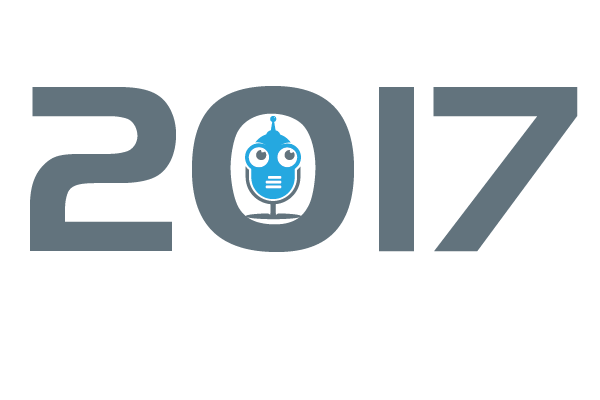2017 Predictions From Voice-first Industry Leaders
Voice-first technologies backed by AI made a big splash in 2016. Amazon Alexa adoption though Echo devices and third-party developers well exceeded expectations. Google had a respectable launch for Google Home and Google Voice Assistant is getting a big boost from users of the new Pixel phone. IBM also made strides with numerous customer announcements around Watson. If 2016 represented a breakthrough for the voice-first industry, then 2017 will represent growth. Below are predictions from VoiceLabs, Sense.ly, NextView Ventures, XAPPmedia, Wilting, Dashbot, Bespoken.tools and Voicebot.
 Adam Marchick, CEO and co-founder, VoiceLabs
Adam Marchick, CEO and co-founder, VoiceLabs
- One or more of the platforms will enable direct person-to-person communication.
- The platforms will enable at least two monetization capabilities. Expect 2017 to be a year of small wins for monetization, as momentum builds for a big 2018.
 Cathy Pearl, Director of UX, Sense.ly and Author of Designing Voice User Interfaces
Cathy Pearl, Director of UX, Sense.ly and Author of Designing Voice User Interfaces
- More and more Voice User Interfaces will attempt to recognize user emotion and act on it in some way. I predict many spectacular failures to start with.
- We will see more examples of truly conversational design, in which the user can continue a conversation with a VUI without having to say the wake word again, or tap the mic. These conversations will also understand pronouns, and remember previous details in the same conversation.
 David Beisel, Partner, NextView Ventures
David Beisel, Partner, NextView Ventures
- There will be 100K Alexa Skills by 2017 year-end.
- Contrarian prediction – there will be a surprise partnership between Microsoft and Facebook to compete with Google and Amazon in the voice category.
 Pat Higbie, CEO and co-founder, XAPPmedia
Pat Higbie, CEO and co-founder, XAPPmedia
- We’re at the dawn of the voice era in technology, and just like in the web and mobile eras, there will be big winners and big losers. Voice will bring about profound improvements in consumer convenience and content discovery and the brands and publishers that deliver those improvements on Amazon Echo and Google Home will be the winners. Forward thinking brands and publishers will seize this opportunity to connect with consumers spontaneously and intimately by voice in the first half of 2017 and then voice experiences will explode as fast followers jump on the band wagon in the second half.
- No screen, no touch, no problem. Voice Personas and soundscapes will emerge as essential digital assets for brands in the voice era.
 Max Mansoubi, Founder & Executive Director of R&D, S-Labs
Max Mansoubi, Founder & Executive Director of R&D, S-Labs
- 2017 will see a strong performance of smartphone-based AR (fully backed by AI) with an unprecedented relevance of the voice component in parallel to the visual one, delivered via Apple AirPod-styled devices. Digital Advisors appear to become the firstline beneficiaries of such development.
- 2017 will see the Amazon Alexa platform expanding to smartphones with skills getting augmented by their own companion mobile app, chatbot messaging features and social component (multiuser real-time interactivity). This will probably open the gate toward some initial form of monetization both via ads or in-app purchase.
- Between Amazon’s Alexa and Google Home, 30-40% of American homes will have a far field voice device, making the adoption of voice tech in the home one of the fastest technologies adopted by the mainstream. These devices will graduate from the status of gadget to that of home appliance in 2017.
- Microsoft will launch a Cortana-enabled Echo like far field device and the sales numbers will be meaningful.
- The sales of voice controlled devices (Alexa and Home) will continue to increase and become much more common in households.
- (Hopefully) The voice controlled devices will be able to distinguish different voices so members of the same household can get customized results – i.e. my wife should be able to ask Google Home for her calendar vs mine.
 John Kelvie, CTO, Bespoken.tools
John Kelvie, CTO, Bespoken.tools
- 2017 is Google’s AI versus Amazon’s API. Amazon’s strength at building platforms will face-off with Google’s deep expertise in natural language and search. Amazon’s API made a big splash at CES as they have embedded Alexa into tons of new devices, from refrigerators to cars to Echo-clones. And on the content-side, they have more than 8,000 skills launched. Google showed off their AI prowess with the innovative discovery features incorporated into Google Home. They are pointing at how a real third-party eco-system can grow, one that is intuitive for users and a boon to developers. The winner will be who can push their advantage fastest while flanking to cover their weakness.
 Hicham Tahiri, CEO, Smartly.ai
Hicham Tahiri, CEO, Smartly.ai
- Todays paradigm is that the voice signal is just a collection of words. The problem is this is a limited approach. There is some very useful metadata that should be taken into account. Two of these are user identification (who is speaking?) and emotion detection (is the person speaking happy, angry, scared, crying, laughing or yelling?). I really hope to see these kinds of innovations in 2017 from at least one of the major players in the voice assistant field like Alexa, Google Assistant or Cortana.
 Bret Kinsella, Editor & Publisher, Voicebot.ai
Bret Kinsella, Editor & Publisher, Voicebot.ai
- The six horseman of AI and voice will stake out ground that increasingly puts them in a B2B or B2C model. Google, Amazon, Samsung and Facebook will focus on B2C. That assumes Facebook actually makes a voice-first move early in 2017 and Samsung makes a big commitment to Viv in its spring launch of the Galaxy S8 and adding it to more appliances throughout the year. IBM and Microsoft will carve out distinctive B2B offerings with the former focused on harnessing intelligence for advisory to professionals and the latter on productivity enhancements.
- Challengers such as Mycroft will establish a base of users in 2017 as the alternative to the big platform players positioning for more significant growth in 2018.











